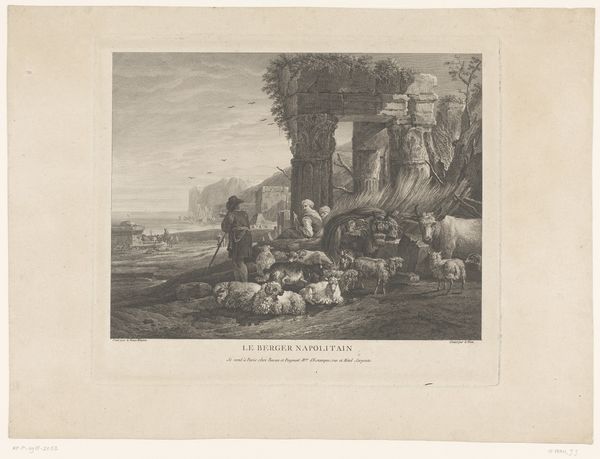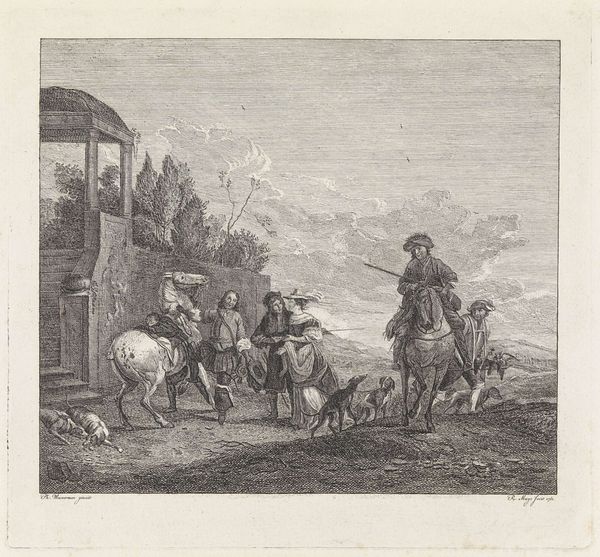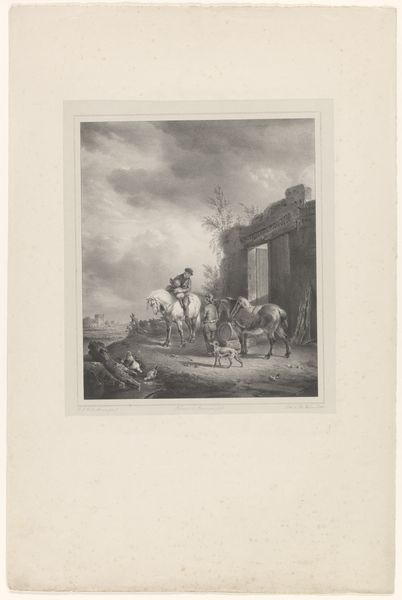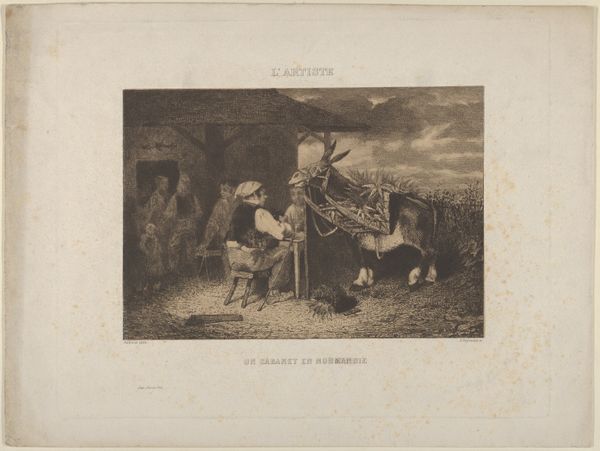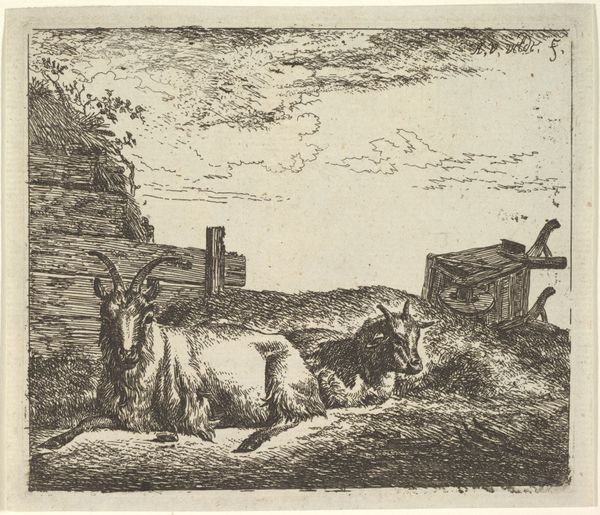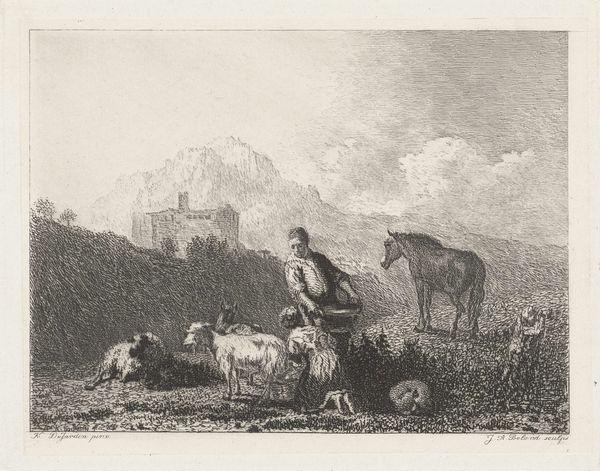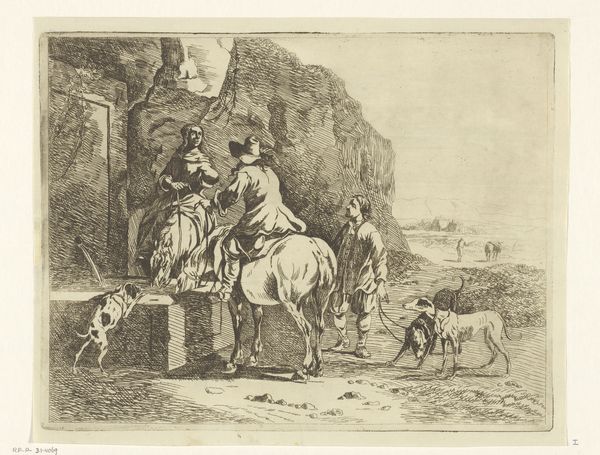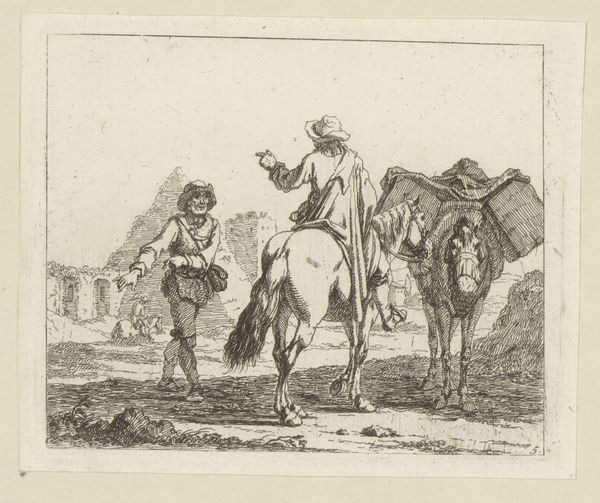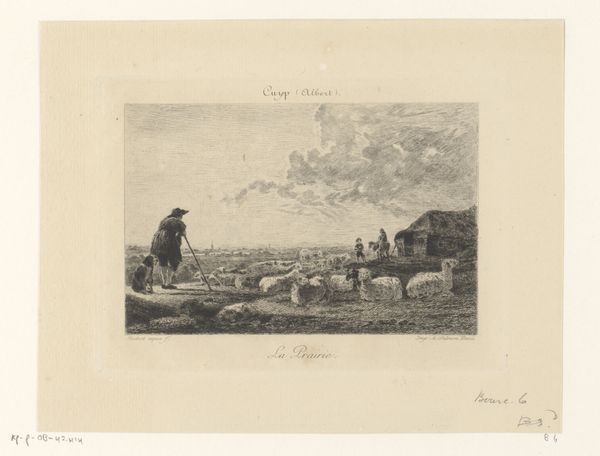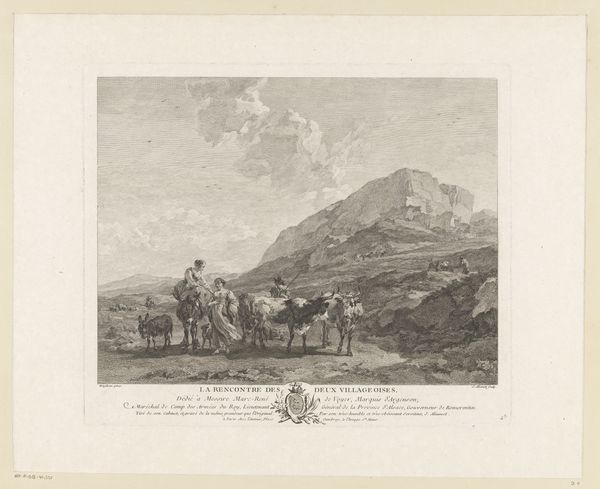
print, engraving
#
baroque
# print
#
landscape
#
figuration
#
line
#
genre-painting
#
engraving
Dimensions: height 250 mm, width 278 mm
Copyright: Rijks Museum: Open Domain
Editor: We're looking at Claude Henri Watelet's "Landscape with Ruin and Young Donkey Driver," an engraving dating from between 1728 and 1786. There's a striking sense of decay, with the ruins contrasting against the figure of a boy seemingly starting a journey. What stands out to you? Curator: The ruin immediately captures my attention. Consider its prominence; it speaks to a cultural memory of past civilizations. Even in decay, there's a grandeur. Note the humble figure in the foreground—the boy with the donkey. What symbols do you see in this juxtaposition of the epic and the mundane? Editor: Well, it makes me think about how life goes on, even amongst the remnants of something great. The boy represents the future, perhaps? Curator: Precisely! The ruin provides a stage upon which new narratives are enacted. Do you notice how the animal becomes more prominent than the architectural decay behind? Editor: Yes, now that you mention it, the donkey is practically centered, with all this lovely cross-hatching that gives it texture. It feels important. Curator: And what might that animal have represented at the time? This era often romanticized the simple life, a connection to the earth, so to speak. Watelet asks us, 'What kind of stories can we find embedded into the past that carry forth?' Editor: It’s interesting how something as simple as a donkey can be a vessel for all that symbolism. Curator: Visual symbols persist because they continue to be meaningful. This piece becomes a reflection on how our relationship to history shapes our present. Editor: I'll definitely look at landscapes differently now, seeing beyond just what's depicted to what's being communicated.
Comments
No comments
Be the first to comment and join the conversation on the ultimate creative platform.

